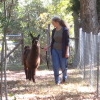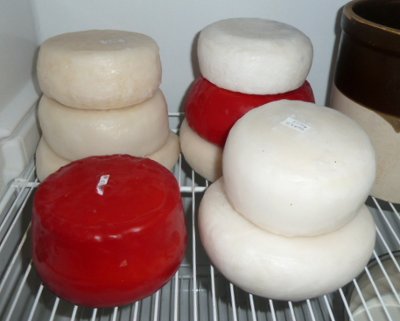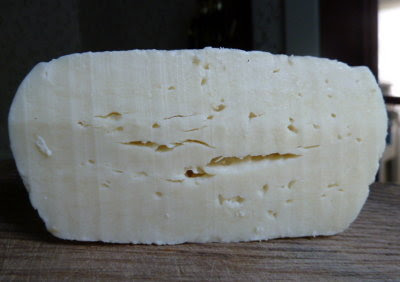

| Visitors Now: | |
| Total Visits: | |
| Total Stories: |

| Story Views | |
| Now: | |
| Last Hour: | |
| Last 24 Hours: | |
| Total: | |
My 1st Repeatable Cheese
I didn’t make any hard cheeses this summer. One reason is because we don’t have a lot of surplus milk. Almost all of it has gone for yogurt and mozzarella. That doesn’t mean we’ve been without cheese. I made 20 hard cheeses last summer and we’re just over halfway through all that.
 |
| Some of the goat milk cheeses I made last year |
Why so slow? Well, these were my first attempts at cheese making and to be honest, the first nine weren’t all that great. Sad, but not a complete disappointment, because I knew I would have to develop the knack for making cheese, much like I did when I learned to make bread or bake with sourdough. I know to give myself some room to learn and make mistakes. Even so, I’ve figured out several reasons why these first cheeses could not be categorized as successes. One, I made the first eight with hand skimmed milk. The cream really makes a difference in flavor and texture. I didn’t realize this until I had dutifully eaten my way through those cheeses (Dan didn’t help me but the chickens did), Then I got to the first cheese made with whole milk. What a difference.
The second reason is the amount of salt. I was skimpy on the salt at first. Recipes give quite a range for how much to add, and I wasn’t sure where to start. So I started on the conservative side. Although cheese is said to be a high sodium food, it doesn’t really taste salty the same way that potato chips do. But the salt is there and makes a huge difference in taste. Once we got to the cheeses that had more salt, the taste improved as well.
Now, cheese number 10 was promising. I blogged about that one (“I Think She’s Got It!”). It gave me hope that the next few would be even better. Still, we were slow to finish it. Then I cut into cheese number 11.
 |
| Cheese #11 |
Sharp (it was aged almost a year after all), but really good. Good enough that it was quickly eaten, and good enough to want to try to make again.
Fortunately I kept a cheese diary and made good notes. I recorded ingredients, times, amounts, and temperatures. I followed the same basic recipe for all my cheeses last summer, using the hard cheese directions from The Little House Cookbook. I have Ricki Carroll’s Home Cheese Making, but I want to try to develop recipes without using purchased mesophilic and thermophilic cultures. I wanted to see if I could make a good cheese from what I have available: whey or buttermilk, for example.
Like almost all my cheeses, this one was made with a gallon and a half of whole raw goat milk, and 2 cups of whey from the previous cheese as the culture. There are several differences however. For cheese #11, I added a tablespoon of whole milk goat yogurt to the whey. I also made a note that I forgot to cook the curds until “squeaky,” i.e. they literally squeak on your teeth when you bite them. This is a standard cheese making step, so it isn’t something I would have thought to omit as an experiment. I also brined it, like I do my mozzarella. That was in addition to a teaspoon and a half of salt added to the curds before putting it in the press.
The question is, can I duplicate it? Well, I’m certainly going to try. I have all the times, temperatures, and steps in my notebook. Trouble is, hard cheeses have to age so it will take awhile to find out if the repeat is a success (slow living at it’s finest). Still, I’ll stick with this recipe for awhile, and make several by it, to see how these turn out. If I can duplicate it, we’ll have our first homestead cheese worthy of a name. I’m not necessarily looking to have a huge repertoire of cheeses, just a few that we really like.
I have plenty of cream in the freezer for butter, so I’m going to save up whole milk to try this recipe again. Wish me good providence!
[UPDATE: Oct. 2012 - I did indeed try this cheese again. For the recipe and a photo tutorial, click here: Cheese #11 - The Recipe.]
2012-11-27 10:26:04
Source: http://www.5acresandadream.com/2012/09/my-1st-repeatable-cheese.html
Source:


